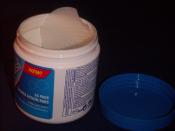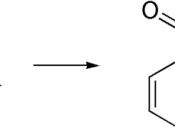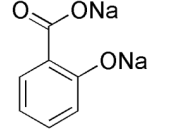Synopsis
The purpose of this experiment was for students to prepare some simple organic compound and to purify the compound by recrystallisation.
This experiment allowed the students to conduct the synthesis of aspirin, acquire the skills of recrystallisation using normal filtration and reinforce the technique of the melting point determination.
The method used to synthesize aspirin was esterification by reacting salicylic acid with acetic anhydride with the presence of dehydrating agent, conc. sulphuric acid, to speed up the reaction. Having obtained the crude aspirin which was still impure, recrystallisation was conducted to remove the impurities.
The aspirin harvested at the end of the experiment was 1.19g with the percentage yield of 37.8%. The melting point observed from the product ranged from 133ðC to 137ðC.
Introduction
Acetylsalicylic acid or commonly known as aspirin is an organic compound belong to ester group with condensed structural formula of CH3COOC6H4COOH.
(2) (2)
C6H4(OCOCH3)COOH 3D model of chemical structure of aspirin
Aspirin derived from salicylic acid is categorized as nonsteroidal anti-inflammatory drugs or NSAIDs. It is commonly used to reduce minor pain and aches (analgesic), lower fever (antipyretic), thin the blood (anticoagulation), reduce the inflammation such as rheumatism and arthritis (anti-inflammatory), enhances the elimination of uric acid (uricosuric) and reduce the risk of stroke, heart attack and other heart problems in long-term low-doses.
The related compound of aspirin from willow bark (Salix alba) has been used to relieve pain and reduce fever since hundred of years a go. The Chinese used the willow bark as a remedy in 500 BC while the record that willow bark could ease aches and pains and lower fever was written by Hippocrates, a Greek physician in 400 BC.
However, it was only until 1763 when the Reverend Edward Stone discovered the effectiveness of willow bark in reduce fever...


